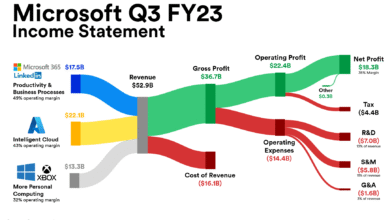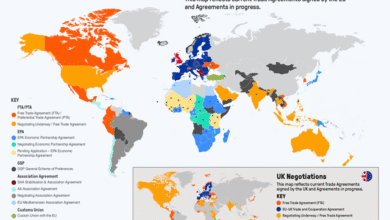Toyota bZ EV: Exciting New Upgrades for 2026 Model Year

The Toyota bZ EV marks a significant evolution in the world of electric vehicles, as the automotive giant unveils its redesigned model for the 2026 lineup. This all-electric vehicle, previously known as the bZ4X, boasts enhanced capabilities and advanced EV charging technology, making it a formidable contender in the growing electric market. With improvements including a remarkable 25% increase in range, now up to 314 miles, and a 50% boost in horsepower, the Toyota bZ is poised to compete directly with leading models like Tesla’s Model Y. Moreover, the integration of Tesla’s North American Charging System port ensures that drivers will have access to an extensive network of high-speed charging stations, enhancing convenience and practicality. As Toyota makes strides to elevate the appeal of its electric vehicle offerings, this latest iteration aims to meet evolving consumer demands and solidify the brand’s position in the competitive EV landscape.
Introducing the next generation of Toyota’s electric lineup, the 2026 Toyota bZ serves as a prime example of the brand’s commitment to sustainable mobility solutions. Often referred to as an all-electric offering, the latest iteration enhances driving range and performance characteristics, positioning it as a serious alternative to other electric vehicles on the market. As Toyota broadens its horizons in the electric vehicle sector, the bZ range continues to evolve, incorporating state-of-the-art EV charging technology and maximizing user convenience. This move comes as the automotive industry pivots towards electrification, showcasing Toyota’s innovative approach to meeting consumer needs and expectations for eco-friendly transportation. With improvements aimed at both performance and reliability, the Toyota bZ signifies a promising future for drivers seeking sustainable yet powerful driving experiences.
Overview of the 2026 Toyota bZ EV
The 2026 Toyota bZ EV represents a significant evolution in Toyota’s electric vehicle lineup, building on the foundations laid by the previous model, the bZ4X. With a simpler name and enhanced technical features, the bZ aims to compete directly with established players such as Tesla and GM. The decision to shorten the model name to ‘bZ’ reflects Toyota’s commitment to making its electric vehicle offerings more accessible to consumers and aligns with market trends demanding clarity in vehicle identification.
Notably, the improvements in the 2026 model are geared towards overcoming the initial criticisms faced by the bZ4X. Enhancements like a 25% increase in range, now reaching up to 314 miles, and a substantial boost in horsepower to 338 hp in all-wheel drive variants mark a decisive strategy by Toyota. These updates not only improve performance but also enhance the vehicle’s appeal in a competitive market that is becoming increasingly crowded with advanced electric vehicles.
Frequently Asked Questions
What can we expect from the 2026 Toyota bZ electric vehicle?
The 2026 Toyota bZ promises significant upgrades over its predecessor, the bZ4X, including a 25% increase in EV range, reaching up to 314 miles on a single charge. Additionally, horsepower has been boosted by 50%, enhancing its performance to compete more effectively with rivals like Tesla’s Model Y.
How does the 2026 Toyota bZ compare to the 2022 bZ4X?
While the 2022 bZ4X received mixed reviews, the 2026 Toyota bZ improves upon this with key enhancements such as increased range, stronger horsepower, and improved charging technology. The bZ is now equipped with Tesla’s North American Charging System port, allowing easier access to high-speed charging stations.
What charging technology is available with the Toyota bZ?
The 2026 Toyota bZ features advanced EV charging technology, capable of charging from 10% to 80% in approximately 30 minutes under optimal conditions, thanks to its access to Tesla’s extensive network of fast-charging stations across the country.
What is the pricing range for the new Toyota bZ electric vehicle?
The pricing for the 2026 Toyota bZ has not been officially disclosed yet, but it is expected to range between approximately $37,000 to $42,000, depending on the model, similar to its predecessor, the bZ4X.
How does the Toyota bZ range position it in the EV market?
With an increased EV range of up to 314 miles, the Toyota bZ stands competitively among all-electric vehicles, positioned against popular models such as the Tesla Model Y and General Motors’ Chevrolet Equinox. This improvement aims to attract customers looking for reliable long-range electric options.
What improvements were made to the performance of the Toyota bZ?
In terms of performance, the 2026 Toyota bZ features significant improvements, including an increase in peak horsepower to 338 hp for all-wheel drive models and 221 hp for front-wheel drive variants, thus enhancing its acceleration and driving dynamics.
When is the 2026 Toyota bZ expected to be available in U.S. showrooms?
The 2026 Toyota bZ is expected to begin appearing in U.S. showrooms from its production facility in Japan during the second half of the year, making it an exciting addition to the growing EV market.
What are the new design features of the 2026 Toyota bZ?
The 2026 Toyota bZ will showcase updated interior and exterior designs aimed at enhancing its appeal and competitiveness among a diverse selection of electric vehicles available in the U.S. market.
| Key Point | Details |
|---|---|
| New Name | The redesigned vehicle will be called the “bZ,” shortened from “bZ4X.” |
| Enhancements in Technology | Includes a 25% increase in range, from 252 miles to 314 miles. |
| Power Improvements | Horsepower increased from 214 hp to 338 hp for all-wheel drive models; 20-horsepower increase for front-wheel drive to 221 hp. |
| Charging Speed | The bZ can charge from 10% to 80% in about 30 minutes under optimal conditions. |
| Market Positioning | Competitively positioned against rivals like Tesla’s Model Y and GM’s Chevrolet Equinox and Blazer EVs. |
| Sales Performance | Toyota has sold approximately 35,000 units of the bZ4X since late 2022, with significant sales in 2024. |
Summary
The Toyota bZ EV represents a significant step forward for the company in the electric vehicle market. With its new enhancements and simplified name, the bZ aims to address previous criticisms and better compete with leading EVs in the U.S. By improving its range, power, and charging capabilities, the bZ EV is set to attract more customers and solidify Toyota’s commitment to electric mobility.




